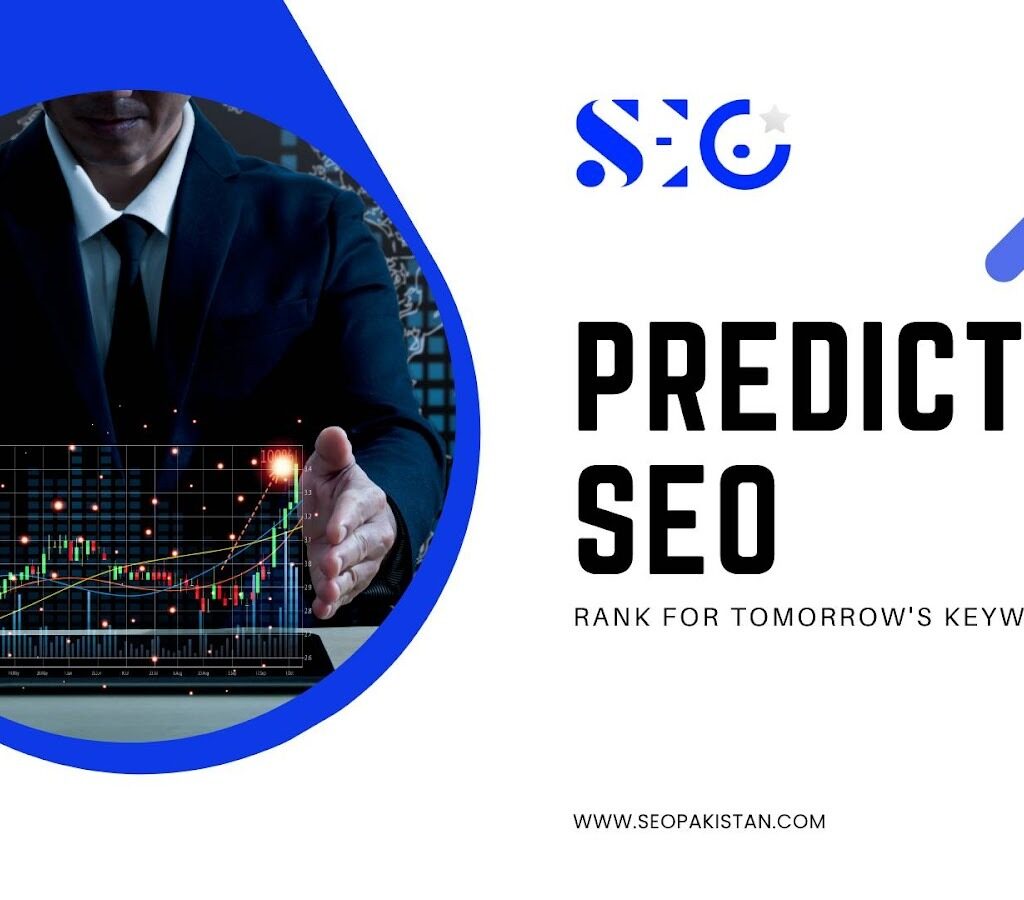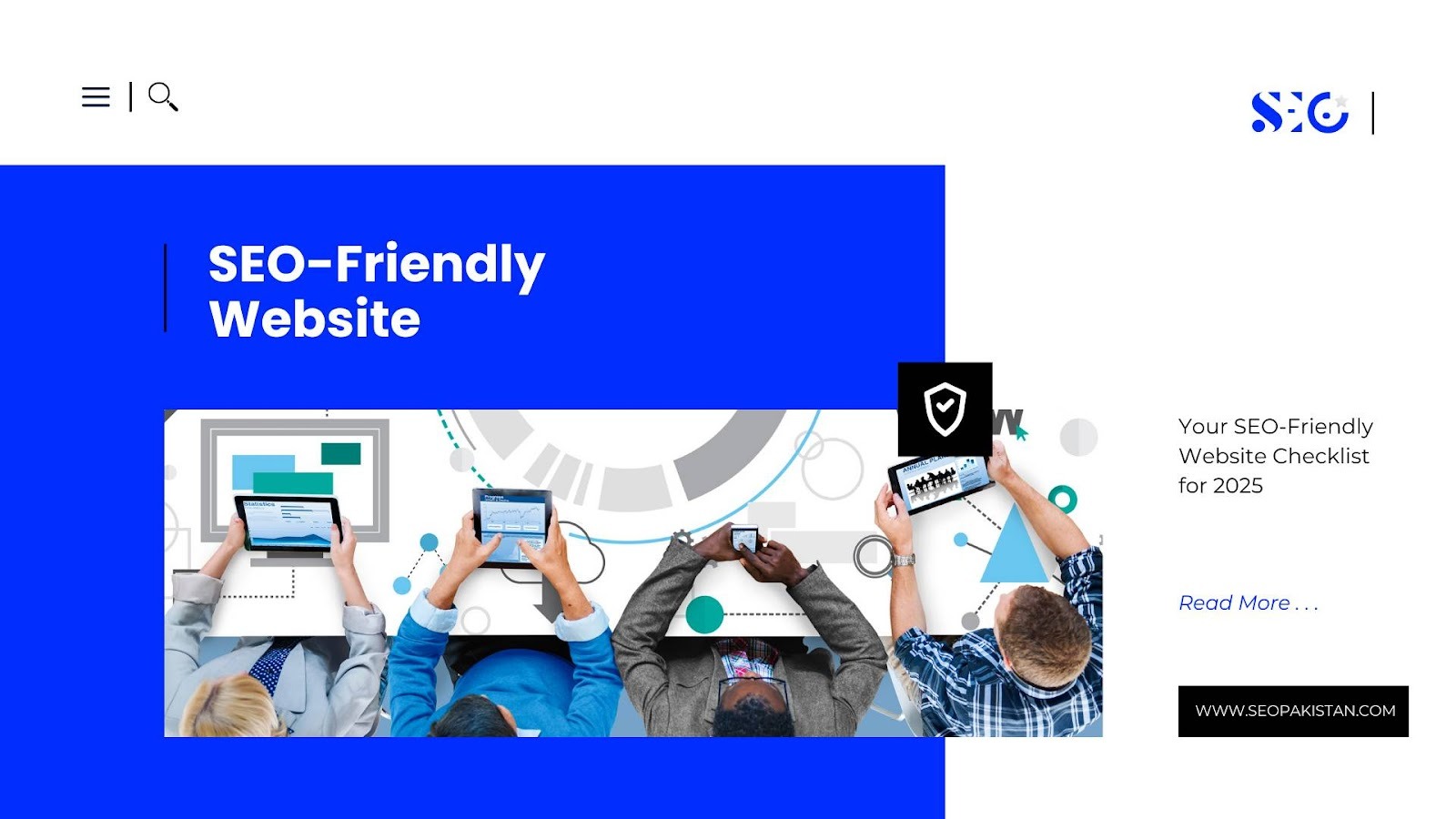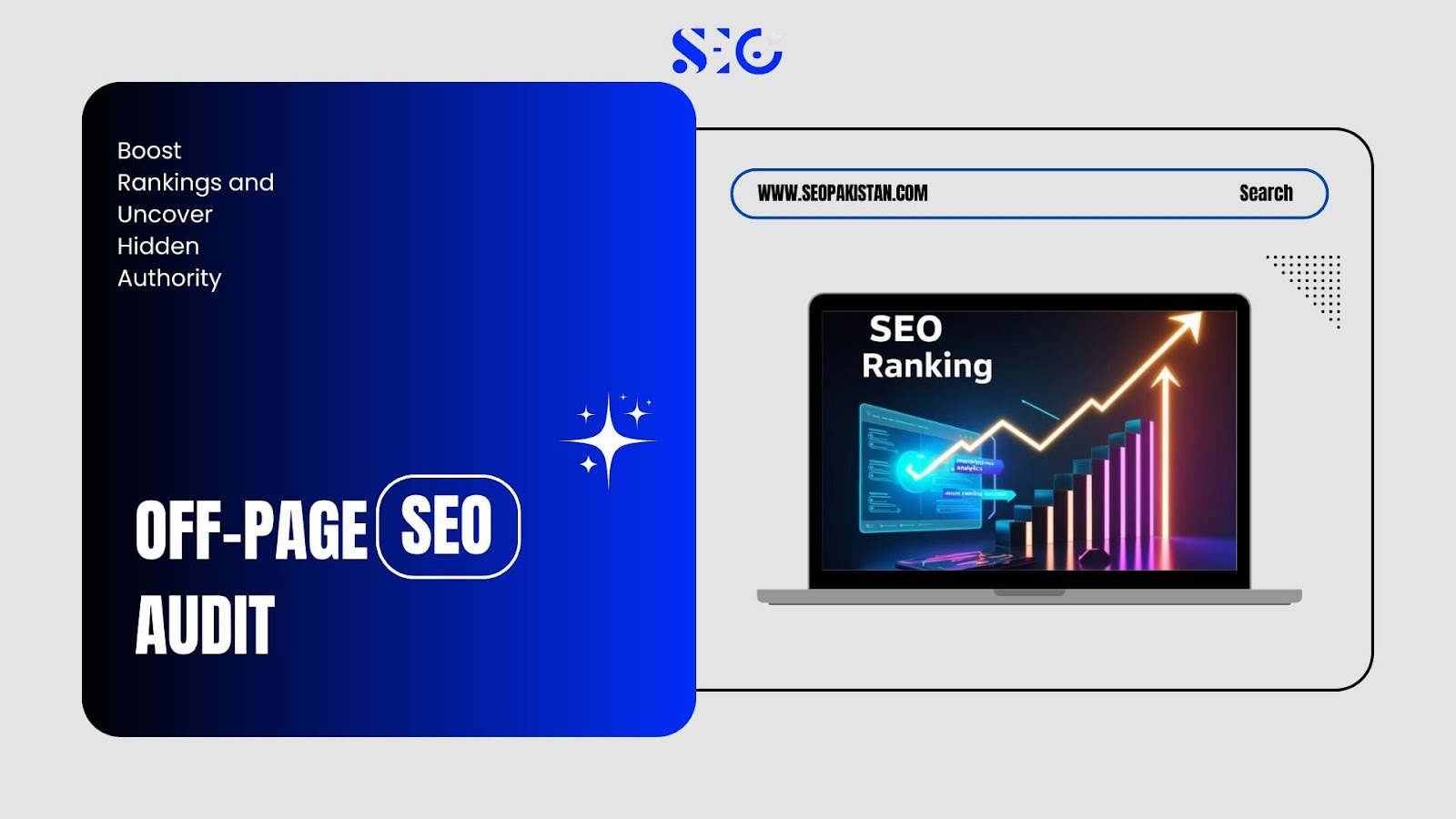What if you could stop reacting to SEO changes and start predicting them? For years, marketers have been stuck in a cycle of catch-up, scrambling to adapt after every algorithm update or traffic drop. This reactive approach is like navigating a maze blindfolded, always one step behind. But a fundamental shift is happening.
It’s time to trade guesswork for foresight. This is the power of Predictive SEO. By using AI and data analytics, you can anticipate future trends, forecast algorithm shifts, and create content that meets user needs before they even emerge.
This guide will show you how to move from reacting to ranking proactively. We’ll unlock the strategies you need to future-proof your search engine rankings and secure a dominant position for years to come.
What is Predictive SEO and How Does It Work?
Predictive SEO is the application of machine learning, statistical modeling, and trend forecasting to anticipate future demand, user intent shifts, and search intent.
By analyzing historical data, search data, and monthly search volume, predictive SEO empowers businesses to spot emerging trends and identify emerging trends before they become mainstream.
Here is how predictive SEO AI works:
- Uses raw data such as impressions, clicks, and traffic volatility to project search trends.
- Leverages keyword trend forecasting and competitor analysis for a competitive edge.
- Employs predictive insights to optimize content and keyword strategy.
- Produces targeted content and blog posts that anticipate users’ future queries.
The Shortcomings of Traditional SEO Approaches
Traditional SEO approaches often fall short because they are reactive, addressing issues like traffic drops or penalties only after they occur. They rely on tools like Google Trends, which provide insights into current trends but fail to predict future shifts in user behavior or algorithm changes.
This limits their ability to adapt proactively, leaving businesses vulnerable to sudden changes in search engine dynamics. Traditional SEO strategies still play an important role, yet often fall short in anticipating future demand:
- Reactive SEO: Focused on fixing drops in organic traffic and responding to penalties. This only addresses issues after search engine rankings have already suffered.
- Traditional SEO & Google Trends: Provides insight into trending keywords, but fails to anticipate rapid changes in user behavior, search intent, and future algorithm shifts driven by AI-powered search engines.
- PPC Advertising: Delivers immediate visibility, but does not impact long-term rankings and results in higher Customer Acquisition Cost (CAC).
Predictive SEO, by contrast, leverages predictive analytics and AI to predict trends, spot future algorithm changes, and keep your strategy one step ahead.
The Predictive Mandate: Importance, Challenges, and Benefits
Search engine optimization is evolving rapidly. Search engines are now prioritizing user experience, mobile friendliness, and structured content, especially for featured snippets and AI-generated summaries.
Predictive SEO allows you to optimize your content and your content strategy today for the search results and future algorithms that will determine tomorrow’s rankings.
Why Predictive SEO is So Important
Predictive SEO is crucial because it helps businesses anticipate future search trends, algorithm changes, and user intent. This proactive approach ensures content stays relevant, boosts rankings, and secures a competitive edge in an ever-evolving digital landscape.
- Search Engine Algorithms are Changing: Core updates now prioritize voice search queries, E-E-A-T, and how users interact with content.
- Data Overload: Vast amounts of search data and user behavior signals require AI-powered tools to process and produce actionable predictive insights.
- Algorithmic Uncertainty: Predictive analytics helps digital marketers forecast rankings throughout random Google testing periods.
Common Areas for Predictive SEO
- Content Strategy: Identify and fill future query gaps with targeted, authoritative content.
- Technical Health: Use trend forecasting to model traffic decay and schedule content updates ahead of rankings loss.
- Algorithm Monitoring: Employ competitor analysis and site audits to detect early warning signals of search engine algorithm changes.
Five Benefits of Predictive SEO: A True Game Changer
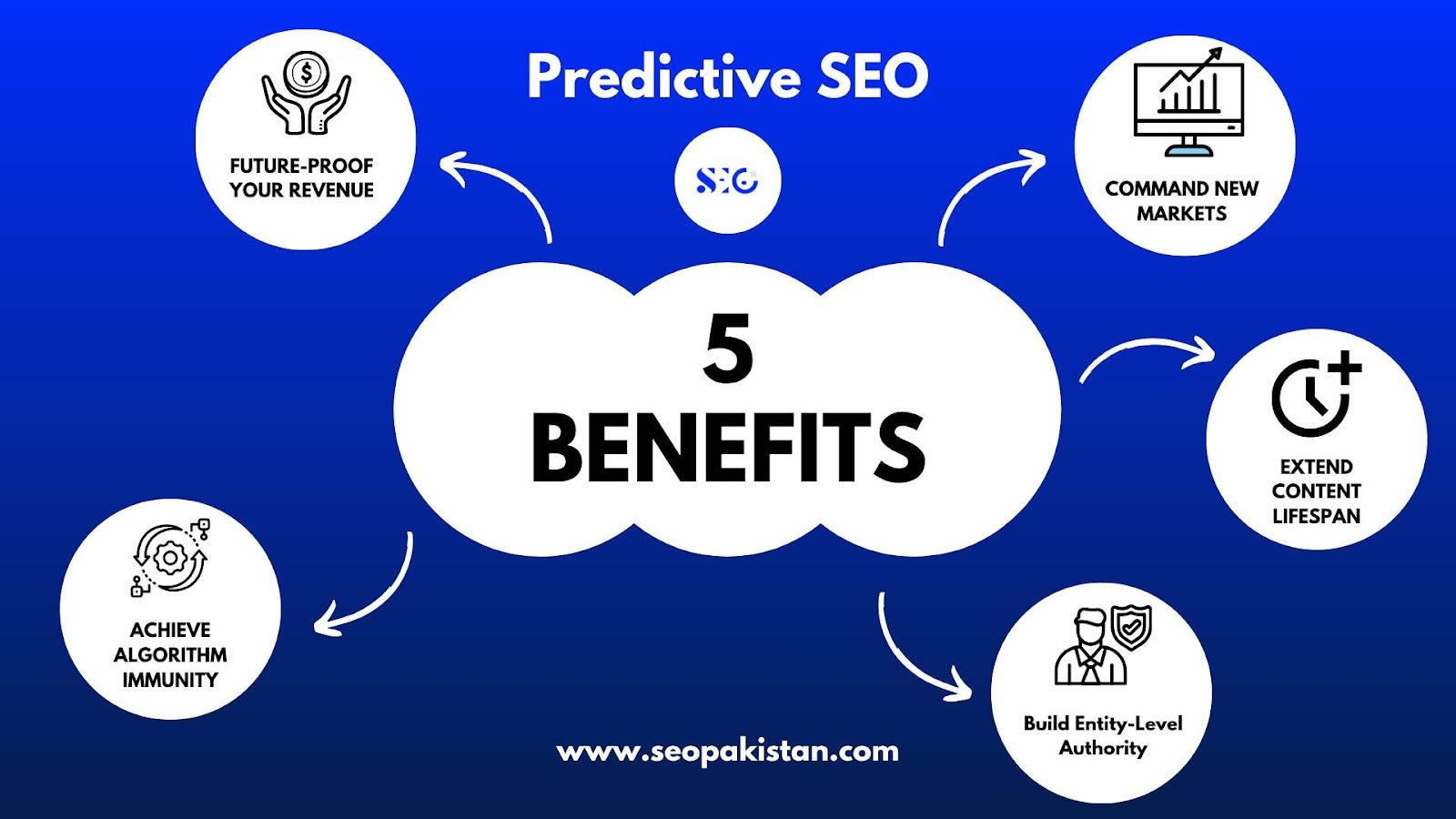
- Future-Proof Your Revenue: Invest in content with high-predicted long-tail keywords and potential to drive traffic.
- Achieve Algorithm Immunity: Predict future algorithm changes and proactively optimize your SEO strategy.
- Build Entity-Level Authority: Establish your site as an expert on certain keywords and emerging trends, increasing your E-E-A-T.
- Extend Content Lifespan: Refresh and publish content before it decays, ensuring steady organic traffic and improving conversion rate optimization.
- Command New Markets: Spot search intent shifts and publish targeted content before competitors even notice the new trend, securing a competitive edge.
The Predictive Playbook: Five Secrets to Master Predictive SEO
The Predictive Playbook outlines five advanced strategies to help you master Predictive SEO. These secrets empower you to stay ahead of trends, optimize content proactively, and secure a competitive edge in search rankings. Let’s dive into these game-changing tactics!
Apply these five advanced strategies, and you will be revolutionizing SEO for your business:
Traffic Decay Curve Modeling
Use AI-powered tools and past data to analyze when your top content will lose momentum. Predict when a blog post’s traffic will dip and refresh it before this decline.
- Continuously update existing content based on historic and predicted search trends.
- Keep content ahead of competitors and maintain high rankings in search results.
Future-Query Gap Analysis Via LLMs
Employ AI-powered large language models to predict which user queries related to emerging topics, such as future AI in e-commerce, will matter six to twelve months down the road.
- Prompt the LLM to generate future-focused voice search queries, then create content addressing those user queries before search data registers the trend.
- Identify emerging trends early and build content clusters around them.
Competitor Velocity Modeling
Analyze how fast your competitors are building links, producing content, and improving their technical health. Predict which keywords or content areas they are targeting.
- Use this knowledge to adjust your own keyword strategy and trend forecasting.
- Get ahead by publishing targeted content before their SEO campaigns take effect.
Semantic Topic Latency
Monitor digital communities and raw data signals for topics that show high discussion volume but low monthly search volume.
- Create entity-rich, structured content to position yourself as an authority on emerging trends.
- When interest in these topics peaks in search engines, your content will already have established authority.
Algorithm Change Signal Tracking
During site audits, look for sudden volatility in certain keyword categories or content clusters. These traffic spikes and dips often signal that Google is testing future algorithm changes.
- Immediately review these areas for E-E-A-T improvements and content optimization.
- Adjust in advance to maintain strong search engine rankings and drive early traffic.
Strategy and Execution: The Future of Search Engine Optimization
The future of SEO strategy belongs to those who use predictive analytics and AI-powered tools to predict trends, adapt to user intent, and stay ahead of both the competition and search engine algorithms.
As search engines prioritize entities over keywords and produce more featured snippets and AI-generated answers, predictive SEO becomes the foundation of a robust digital marketing strategy.
Building Your Predictive SEO Framework
- Phase 1: Consolidate Raw Data: Gather two or more years of ranking, keyword trend forecasting, and conversion rate optimization metrics.
- Phase 2: Anticipate Trends: Implement predictive SEO AI, focus on competitor analysis, and align your keyword strategy to future search trends.
- Phase 3: Create and Optimize: Publish content based on emerging search queries and optimize for both AI and user behavior.
Measuring Success: New SEO KPIs
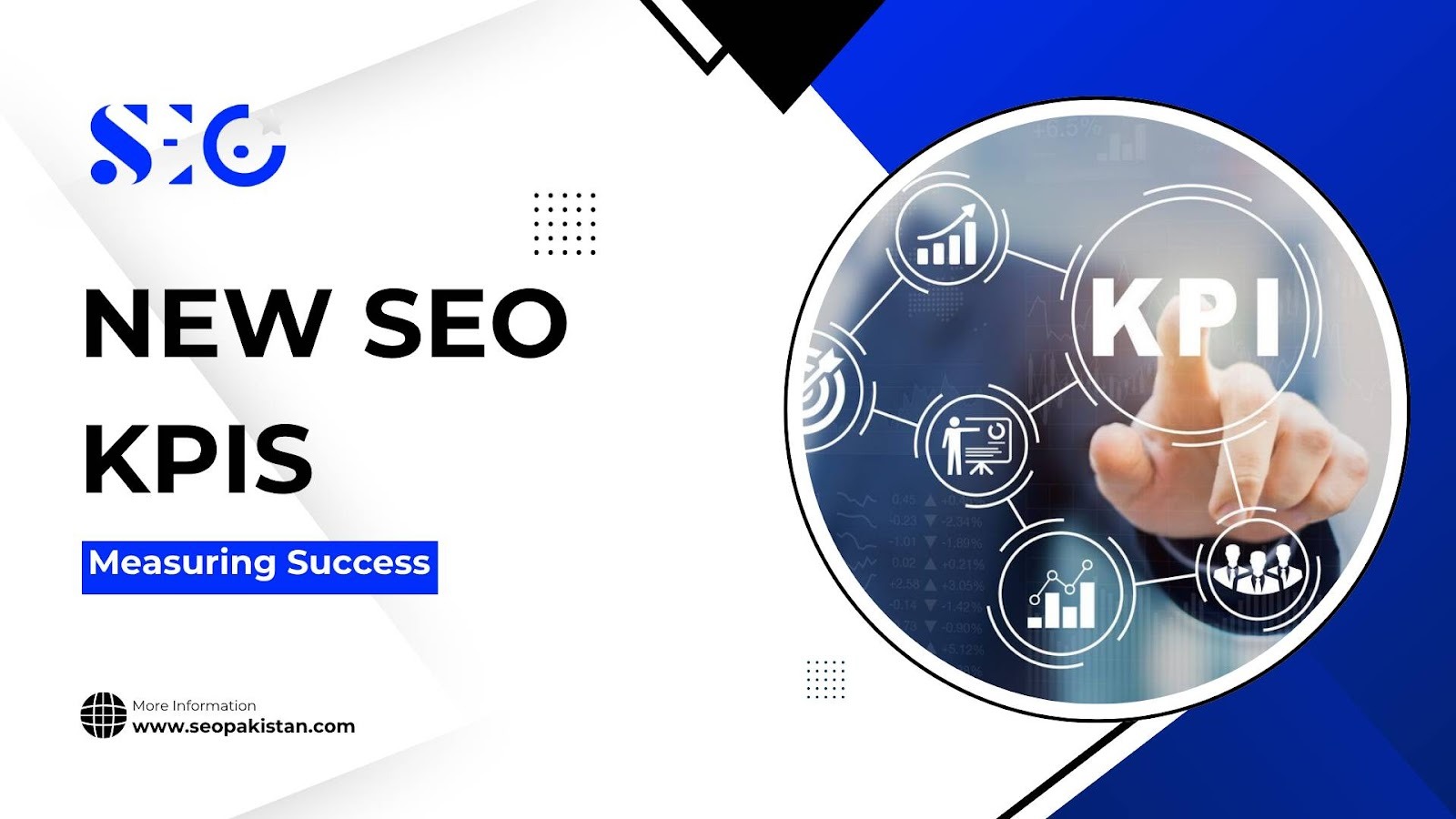
Move beyond conventional metrics, track how often you refresh content before predicted decay, your site’s volatility during industry-wide algorithm changes, and how much more traffic and organic traffic you capture ahead of the competition.
Conclusion: Your Path to Superior Organic Traffic
Predictive SEO is a powerful tool that revolutionizes traditional SEO. It empowers SEO professionals and digital marketers to use advanced tools, machine learning, and AI-powered insights to anticipate future search trends and produce targeted content that delivers lasting results.
Which of these five strategic hacks will you implement to drive traffic and secure your search rankings? Make an informed decision today to transform your search engine optimization and stay ahead of the curve with seo pakistan.
Frequently Asked Questions
What is predictive SEO?
Predictive SEO uses AI, machine learning, and data analytics to forecast future search trends, user intent, and algorithm changes, enabling proactive content creation.
What is predictive vs prescriptive?
Predictive analytics forecasts future outcomes based on data, while prescriptive analytics suggests actions to achieve desired results based on predictions.
What are the four types of SEO?
The four types of SEO are On-Page SEO, Off-Page SEO, Technical SEO, and Local SEO.
What is an example of predictive targeting?
Predictive targeting involves using AI to analyze user behavior and suggest products or content, like Netflix recommending shows based on viewing history.
Is ChatGPT a predictive model?
Yes, ChatGPT is a predictive model that uses machine learning to generate text based on patterns in its training data.

